My Reflexology studies started in the 1990s with Eunice Ingham’s book Stories the Feet Can Tell Thru Reflexology/Stories the Feet Have Told Thru Reflexology. I was sitting for one of my herbal exams when I inadvertently checked out Ingham’s book at the library – someone had returned it to the counter and when I was checking out with my books the librarian stacked my herbal books on top of this book on feet. I get home and I’m cramming for the exam, going through my stack of borrowed herb books, and I get to the bottom of find a book on feet. I sat for the exam (passed!) and then read Ingham’s Stories and that sparked a decades long love affair with this modality. I wanted to study Reflexology but New Mexico didn’t have a program at the time so I enrolled in a correspondence course. The course was exceedingly rudimentary – not much more than what I had in Ingham’s book really. I felt frustrated so I let this dream go assuming I’d never have the opportunity to really train in it.
In 2003 I was living just outside of Boston, Massachusetts and I did an online search for Reflexology courses in my area, on a whim. Lo and behold there was a course being offered in my area, had an open house that weekend, and met the national education standards! I attended the open house, enrolled in the course, and just a few months later was bouncing in my seat in the classroom. My instructor, Rachel, was very patient with me as I poured out all I knew about Reflexology and that I’d been working on loved ones for seven years. While the correspondence course had certainly whet my appetite it had done me no favors in trying to demonstrate techniques specific to the modality. I had been doing the caterpillar thumb walk wrong all those years! It was a wonder I hadn’t injured myself.
Based on my experiences and those I have taught and worked with here’s where I think the pros and cons really stand out with regards to distance learning lessons.
Classroom Format

Screenshot of the Virtual Classroom
Online classes are presented in a virtual classroom setting accessed via an internet connection. Depending on the software this may be accessible via laptop, desktop, tablet, and/or a smartphone. In the program I offer, students can access their virtual lessons through all of the above tools. Unlike some online lessons mine include a few components that help students get the most out of a somewhat passive learning tool:
- Lessons have kinesthetic tools for anatomy and physiology study
- Techniques are discussed but demonstration and return demonstration is reserved for practicum lessons
- Attendance is compulsory, if a student has to miss part or all of a live class they will need to make up those missed hours prior to graduating
- Lessons are presented peer-to-peer to foster communication styles and create a more nurturing environment

Studying Father Josef’s Technique with Laura Aho Jodry in 2004
In-person classes have been taught in the United States since the early 1900s. Supervised practicum is where the instructor demonstrates a technique and/or routine and the student returns the demonstration while the instructor watches. This supervision allows the instructor to make adjustments to the student’s technique and posture and in turn the student gets to develop their muscle memory for the kinesthetic application. When I attend a continuing education workshop and learn a new technique I can:
- Observe the instructor’s demonstration, ask for clarification on their demo – are you using the edge of your thumb? or is that the sustentaculum tali or are you more posterior?
- Return the demonstration for both the instructor to offer any critiques as well as the classmate I am work on to give feedback – your pressure isn’t the same, Amy or you’re a little high, it’s more distal, et cetera
Classmate Interactions

A 2019 Practicum Day in the Studio
Interactions with classmates is a key learning tool in a Reflexology program. In my hybrid program students get a blend of simple and complex interactions with their peers and myself. Online classmate interactions are great for:
- Problem solving – discussing protocols and wellness plans, doing grand rounds style collaboration on session planning, and group thinking on session documentation.
- Storytelling – students can share personal experiences related to the content a la: I’ve had plantar fasciitis and the pain radiated from the distal calcaneus…
- Friendly check-ins – the online portion of modules are usually scheduled weekly or every two weeks and these friendly interactions have an opportunity to build between practicum lessons which are usually held every 6-8 weeks.
The in-person practicum lessons lend themselves to a different kind of interaction with classmates, such as:
- Empathetic check-ins – students that partnered in a previous practicum exhibit more empathy with their classmates, how’s your mother feeling after her surgery? did you get a chance to read that book we talked about last time?
- Face-to-face – the camaraderie that forms between classmates that work on each other and take tea and lunch breaks are a valuable and important bond in the learning process. Students report they grasp concepts and techniques quicker when they’re paired with a classmate they feel friendly towards.
- Practicing client interactions – interactions between students help them better prepare for interactions out in the real world with clients. Dialogue, posture, and techniques come together to help create a safe and nurturing place for the autonomic nervous system to rest and relax.
Students share the experience of studying a heart-centered modality together – their passion, hopes, concerns, and vision for their future are all unique with the common denominator being Reflexology. Though we’ve all gone in different directions, fifteen years after graduating I am still in touch with my own Reflexology instructor and several classmates. Classmates that become friends are pretty special!
Introverts and Extroverts, Unite!

Kinesthetic learning using an anatomy coloring book
There’s no mistaking that online lessons are an introverts dream program! Show up in your pajamas, cuddle with the cat, steep a pot of tea, and geek out over the anatomy of endocrine or nervous systems. Sign me up! Extroverts love the idea of showing up for a face-to-face class and are frequently the loveable storyteller with anecdotes for most topics. I think this is why a hybrid program is the best of both worlds. Extroverts can enjoy storytelling in a live class setting and introverts can enjoy making a comfort nest at their desk in the classroom. Both teaching styles allow us to process via visual, kinesthetic, auditory, and verbal tools to achieve a solid foundation in this healing art.
Passive versus Active Learning
Remote studies either via correspondence, recorded video lessons, textbook reading are all passive forms of learning and provide a framework for a theoretical knowledge base in Reflexology. How the body interacts with organ systems, what it may do when experiencing external or internal stressors, ways to best support a particular wellness goal and so forth are all theoretical knowledge and a very necessary part of a Reflexologist’s education. Equally as important is the active learning that takes place in a face-to-face class where theoretical knowledge is put to work through the application of hands-on techniques. We often say Reflexology is a science-art – a lot of the science can be learned online but you can’t learn how to effectively implement it without the art, which is the hands-on training. A comprehensive Reflexology curriculum will have more than 50% of the total hours dedicated to hands-on practice, both supervised and unsupervised.
National Education Guidelines

Attending the 2008 Reflexology Association of America Conference in Maine
Reflexology is a self-governed modality in the United States. What this means is that the profession has chosen for itself how a professional Reflexologist is trained, practices, and markets this modality. Reflexologists elect peers to represent themselves on state and national levels through membership organizations like the Reflexology Association of America and state-level associations like the Texas Reflexology Association. Another organization representing us is the American Reflexology Certification Board, which tests Reflexologists for theoretical and practical skills via a board exam proctored by peers. This self-governance is a key part of Reflexology maintaining autonomy as a bodywork modality and not being absorbed by another modality like acupuncture or massage.
As a profession we have collectively decided that it is impossible to train as a Reflexologist without practicum lessons. Reflexology is a hands-on modality that relies heavily on techniques unique to the profession and the practitioner’s ability to detect subtle changes in the reflex maps of their clients. A couple of example guidelines are:
- American Reflexology Certification Board (ARCB) requires 110 classroom hours of education to sit for the board exam
- Reflexology Association of America (RAA) requires 300 classroom hours of education with 180 of them being offered live
What Do Other Reflexologists Think About Online-Only Courses?
I asked several Reflexologists the following question: “What are your concerns about Reflexology being taught in an online-only format with little to no hands-on skills being passed on to graduates?” Here’s what they had to say:
- I am a hands on learner. I enjoyed being taught that way. – Renita from Iowa
- I get people who have done these online courses who then find that they know very little about reflexology, or the human body, or how to be a therapist, and they come to me for a proper qualification. One of them told me she hadn’t actually put her hands on anyone else’s feet but she’d got the certificate that said she was a reflexologist! There is no substitute for face to face teaching and observation and guidance, or for actually getting your hands on someone else’s feet and practising! – Chris from Coventry, UK
- Some vocations may be acceptable to learn via an on-line format. Reflexology is not one. The dynamics of learning the correct positioning, to gauge proper pressure, having a capable instructor to give invaluable knowledge – a person who wants to truly help others will desire to get the best on hand training possible.
Perhaps it is to our craft’s detriment that we make it look so easy. – Ilonka from Oklahoma - I cannot imagine doing an online course with no practical input. One can have all the theoretical knowledge but without the practical input one would be lost. – Anneke from South Africa
One of my students writes: Having live online classes followed up by in studio practicum ensures not only that I was applying the right technique, but it also reinforced and locked in the classroom lessons previous to each practicum. Having a person who is qualified and been working in the profession has added experience, advice and guidance that an online course could never give me. I feel confident to work on clients and lucky to have the support you will need to learn this profession. Questions will always come up and so will the need for guidance applying correct technique. As a student and client of Reflexology I would not want online training only. – Sarah, started classes Fall 2018
Hybrid Online and In-Person Studies

Practicum Session in The Barefoot Dragonfly Studio
My goal with the 300-hour Reflexology Certificate Program here at The Barefoot Dragonfly LLC is to offer a hybrid of these two training platforms. Some of the reasons I chose this blended style of teaching include:
- Out-of-town students find the program more accessible where they previously were unable to attend a weekly in-person class schedule.
- Costs are reduced for both instructor and students, allowing the program to be offered at a budget of $2,000.
- Modules are offered in 32 hour increments making it easier for students to budget their time and finances.
- Online classes give students an opportunity to explore anatomy, physiology, and wellness concepts from a theoretical perspective.
- Practicum classes give students an opportunity to translate the online classes into tactile knowledge, developing muscle memory and reflex routines for each body system and reflex area.
I hope this post has been helpful as you explore how you wish to study Reflexology. There’s quite simply no substitution for hands-on training of a hands-on modality. If you’ve previously taken a correspondence or online-only course and want to get some practicum hours in feel free to reach out and we’ll see how I can best support your education needs. Didn’t get any training in Reproductive Reflexology in your 200-300 hour course? Drop me a line and we’ll discussing bringing you into Module Four as a standalone class.



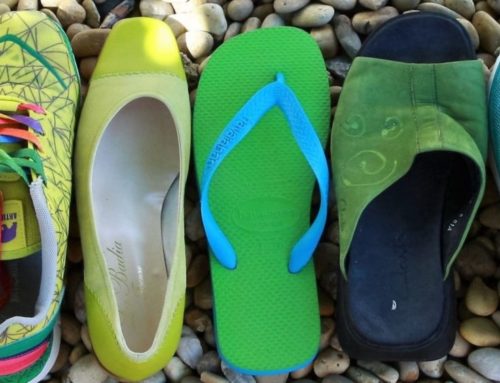
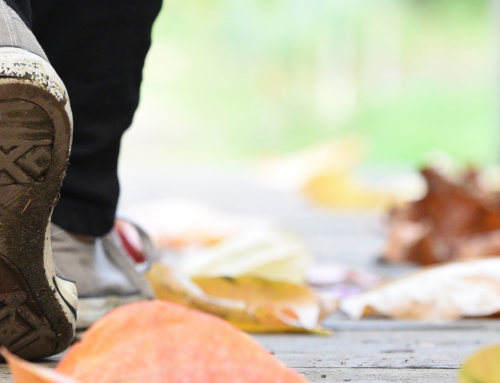
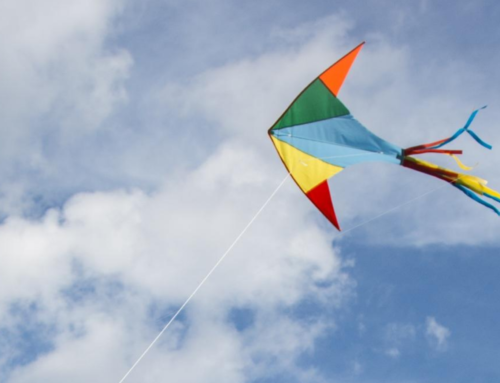
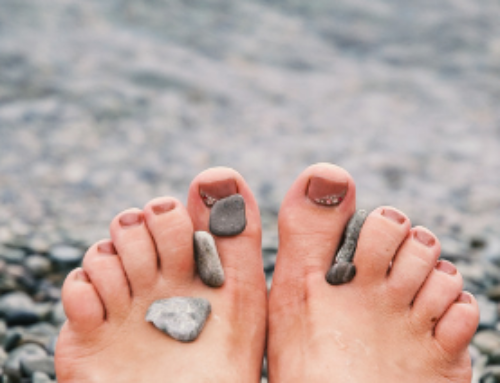

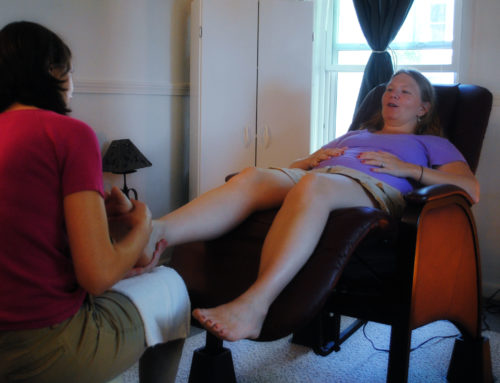
Hi, please send detail information about the 300 hours reflexology program. Thanks
Hi Nydia, course information is available here: https://www.thebarefootdragonfly.com/learning-center/reflexology.